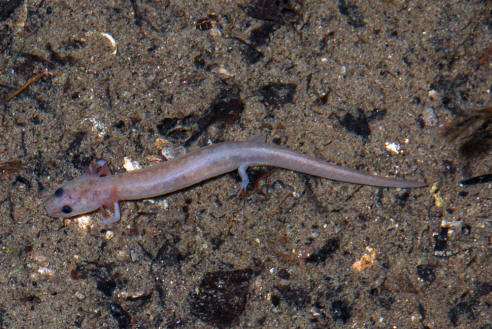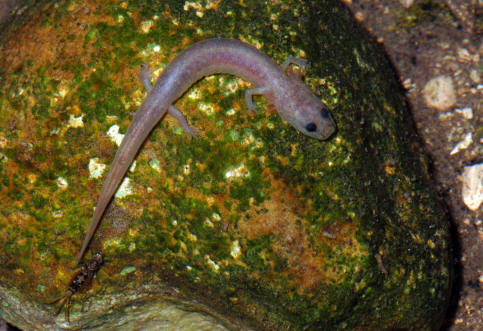

Habitat: these salamanders are fully aquatic, and are most abundant in the immediate vicinity of undisturbed springs. They also occur in spring fed creeks, but are mostly absent from habitats with predatory fish.
Distribution: these small salamanders should occur throughout the Nueces Canyon in the immediate vicinity of permanent springs
Abundance: in undisturbed springs, these salamanders reach very high population densities. We have personally observed 20-30 salamanders at one spring at night. Research on related species indicate that populations at a particular spring may number as high as several hundred to a thousand individuals.
Conservation Status: although some populations of related species are considered threatened (e.g. the San Marcos and Barton Springs Salamanders) there is no cause for concern about this species.
Comments: The Valdina Farms Salamander, Eurycea troglodytes, probably represents a species complex containing multiple species. We expect to see changes in the taxonomy of this species within the next few years.